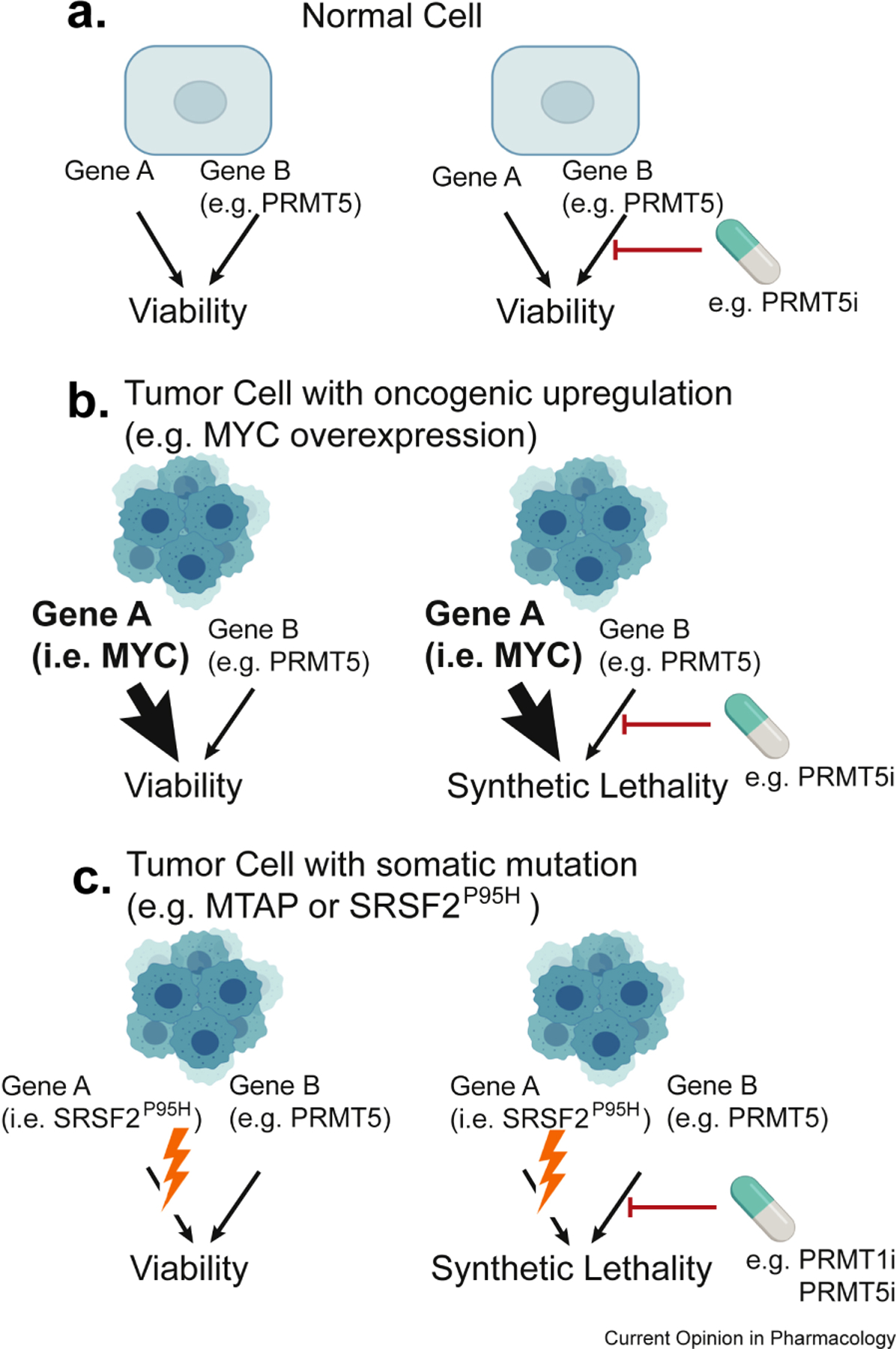Fig.2.

Synthetic vulnerabilities to PRMT inhibitors in cancer. A. In normal cells, the inhibition of gene B (in this example PRMT5), is compatible with cellular viability, granted that gene A is active. B. Synthetic dose lethality. In cells with oncogenic upregulation of a driver (in this example MYC), there is cellular dependence on gene B (i.e. PRMT5). C. Synthetic or Collateral vulnerability. In cells with mutation in a driver (e.g. SRSF2P95H; U2AF1S34F; SF3B1K700E) there is cellular dependence on gene B (i.e. PRMT5). A specific sub-example of synthetic lethality, is when the deleted gene A is a passenger deletion (i.e. MTAP, co-deleted with the CDKN2A/B locus).
